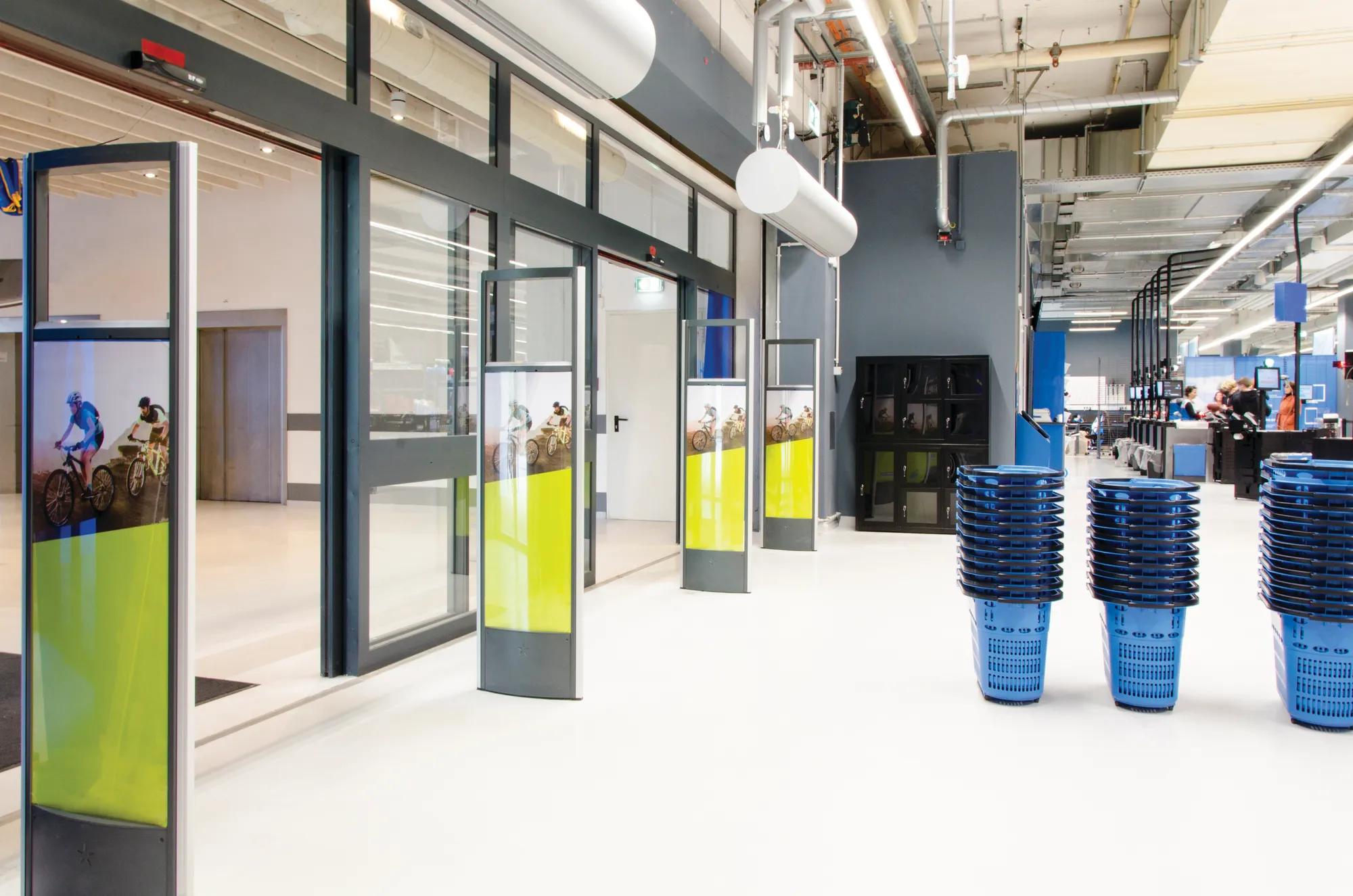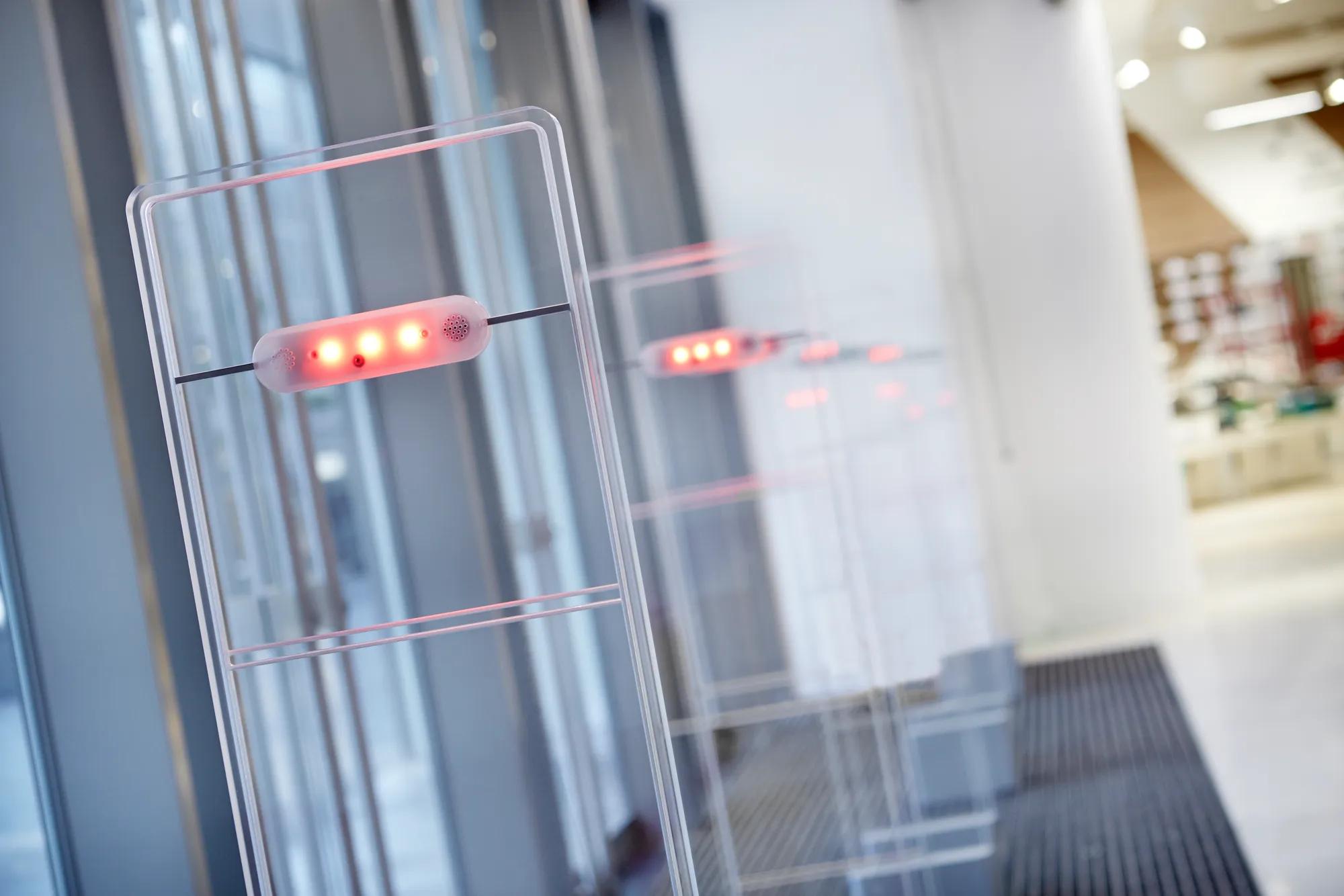The Riddle of EAS Systems

Electronic Article Surveillance (EAS) systems have been a cornerstone of retail loss prevention strategies for decades. As retailers face rising operational costs and increasingly sophisticated shoplifting tactics, EAS systems continue to evolve to meet these challenges. This article explores the current advancements in EAS technology and provides insights into emerging trends that are shaping its future. From the integration of EAS systems into broader retail ecosystems to using artificial intelligence (AI) and the Internet of Things (IoT), the future of EAS promises enhanced retail security, efficiency, and customer experience.
Introduction to Electronic Article Surveillance (EAS)
What is EAS?
Electronic Article Surveillance (EAS) is a loss prevention technology that helps retailers deter theft by attaching electronic tags to merchandise. These tags interact with detection systems at store exits, alerting staff to unauthorized removals.
EAS systems typically consist of:
- Tags: Attached to merchandise, available as hard or soft tags.
- Detection Antennas: Installed at store exits to detect active tags.
- Deactivation Systems: Disable tags at the point of sale.
EAS technology has evolved significantly since its inception in the 1960s, transitioning from rudimentary magnetic systems to sophisticated, integrated solutions.
Importance of EAS in Retail
EAS systems play a pivotal role in retail loss prevention, acting as one of the most effective loss prevention systems to reduce shrink and improve store profitability. Though in recent years some retailers have steered away from EAS solutions, due to the apathy that can be found around the systems, thinking of them almost as nuisances, an argument could easily be made that they simply have implemented them incorrectly and that ultimately, they are among our best defenses to loss. Indeed, when done right, EAS systems can be leveraged as a key detection system to analyze store health corporately and can integrate seamlessly in most retail environments. This article will explore the current and future state of this technology.

Current Trends in EAS Technology
Integration with Retail Ecosystems
Modern EAS systems are no longer standalone solutions. They are increasingly integrated with broader retail management systems, providing real-time data to optimize inventory management, track shrink patterns, and support loss prevention strategies.
Advanced Tagging Solutions
- Source Tagging: Manufacturers embed EAS tags directly into products or packaging, saving time and labor at the retail level.
- RFID-Enabled Tags: Combining EAS and RFID (Radio Frequency Identification) allows retailers to track inventory throughout the supply chain, improving both loss prevention and stock visibility.
Improved Detection and Deactivation Systems
Advances in antenna design and tag deactivation technology are minimizing false alarms and enhancing reliability, contributing to smoother checkout experiences. As retailers move to self checkout or even mobile checkout, these systems will play a key role in allowing transactions to occur while minimizing the inevitable loss that will come with frictionless shopping.

What Does the Future Hold?
AI-Driven EAS Systems
Artificial intelligence is set to revolutionize EAS
With the rise of AI and machine learning, it is becoming possible to parse large datasets in ways that were previously labor and time prohibitive. These data sets tell a story of the health of a retail space and the anthropogenic effects on that space. As machines start to analyze the patterns in the data, they can uncover fraud and loss, expose inefficiencies, and make prescriptive suggestions about how to maximize the selling footprint. Further, as the ecosystem is unveiled to the corporate decision makers, they will be able to make better operational decisions and ultimately maximize their stores potential.
Internet of Things (IoT) Integration
IoT-enabled EAS systems will create interconnected ecosystems where:
The store of the future will largely be automated, and the mundane labor of inventory will be completely offloaded from the manual endeavor of our retail employees. This will allow them to focus on selling and brand experience, and customer service. This will only be possible by leveraging the detection devices as nodes on the central nervous system of the enterprise IP network. If we think of the store as a living organism, the sensors and network will function in much the same way our senses do, allowing key decisions to be made with more real time knowledge. This is only truly possible with connected systems.
Sustainable EAS Solutions
In recent years, it has become clear that everyone needs to do their part as stewards of our environment. Corporations are not immune to this. As a result, sustainability has become a key requirement. EAS manufacturers have followed suit by designing systems which require less power or are deactivated when not in use. They have also worked hard on the consumable side with recyclable packaging, bio-degradable tags and labels, and by using post consumable product in their manufacturing process. Further, the systems of today are being built in a way that overall service life is increased, reducing waste as a by-product of obsolescence.
Enhanced Customer Experience
As RFID becomes more prevalent in the EAS world, advantages to using this tech become obvious, however even with Radio Frequency and Acousto-Magnetic technologies, the advantages to having inventory on hand when your customer is at their peak demand is obvious. If your customer has left their house and traveled to your store ready to buy, you want to make sure they get and pay for what they want. If those items are stolen there is little chance of that. Further, with an integrated RFID system it is completely possible to track shopper preferences and tailor the shopping experience even further to the core customer.
Taking it a step further, it is possible to use RFID inventory tagging not only for EAS but also for real time tracking in the store. This allows your store teams to better service your clients and make sure that store corporate protocols are being followed.
Challenges in Implementing Advanced EAS Systems
Cost of Upgrading Technology
Investment in modern technology can be a tricky topic. It can be hard to determine the contributory metrics that should be used in ROI calculations. Shrink can be used of course, but this only tells part of the story. There is evidence that implementing RFID in a retail space can increase top line revenue by upwards of 6% (Kurt Salmon and Associates). Also, how do you measure client satisfaction and how that translates to increased revenue.
Even if those hurdles are jumped, investment in the correct technology is incredibly important. Making sure that one considers future build forward plans for the system is vital.
Data Privacy Concerns
Any time you implement technologies which sense human activity and then capture that data, there is a concern that privacy might be violated. Time should be spent ensuring that any deployment of technology, especially AI technology, is done with an ethical review. These systems can inadvertently bias decisions and data anonymity must be considered and planned for.
Interoperability Issues
Most organizations cannot simply get rid of all their legacy equipment. Unfortunately, this can sometimes affect decisions on what and how to implement new technology. Special consideration should be put into the roadmap for the future end goal and how the equipment can be implemented and utilized in expanding layers, leveraging what is already in place when possible, enhancing it, and readying for what comes next.
Recommendations for Retailers
Evaluate Current EAS Systems
Loss Prevention pros must evaluate their current retail security program and determine a couple of things.
- Is my current system meeting my goals or is it collecting dust?
- What can currently integrate to work together to better.
Embrace Technology Partnerships
Retailers and LP teams don’t have to go alone. Integrators spend a lot of time and money thinking about how to better implement systems and get desired results. Great integrators take your business objectives to heart, listen and then work to find the solutions with your teams. They also leverage industry manufacturer partnerships to bring best in class thought leadership to the table. The best integrators do all these things but then back it up with service and support to make sure that your systems are going to deliver the calculated ROI.
Focus on Training and Adoption
Eliminating the apathy around EAS systems is paramount to their effective deployment. Store associates must also be held responsible for making sure the systems are in good repair and are properly tested. In order to hear the signal through the noise trust in the system must be developed, this takes training and engagement with these systems to eliminate false alarms and reporting.
Keeping Everyone Safe
One consideration is if these systems might create an unsafe interaction with a patron. Obviously, this should be avoided at all costs, though there is still invaluable information that can be gleaned from a connected system without any patron interaction at all. Once we get away from the concept that these systems are merely for theft detection and start looking at them as an added sensing device on an IT ecosystem.
Conclusion
EAS technology is evolving to address the challenges of modern retail environments. By embracing innovations such as AI, IoT, and RFID, retailers can significantly enhance their loss prevention strategies while improving operational efficiency and customer experience. The future of EAS lies in its ability to seamlessly integrate with broader retail technologies, creating a comprehensive approach to retail security and inventory management.
Learn how EAS can Impact Your Retail Business
Speak with a retail security expert today.























